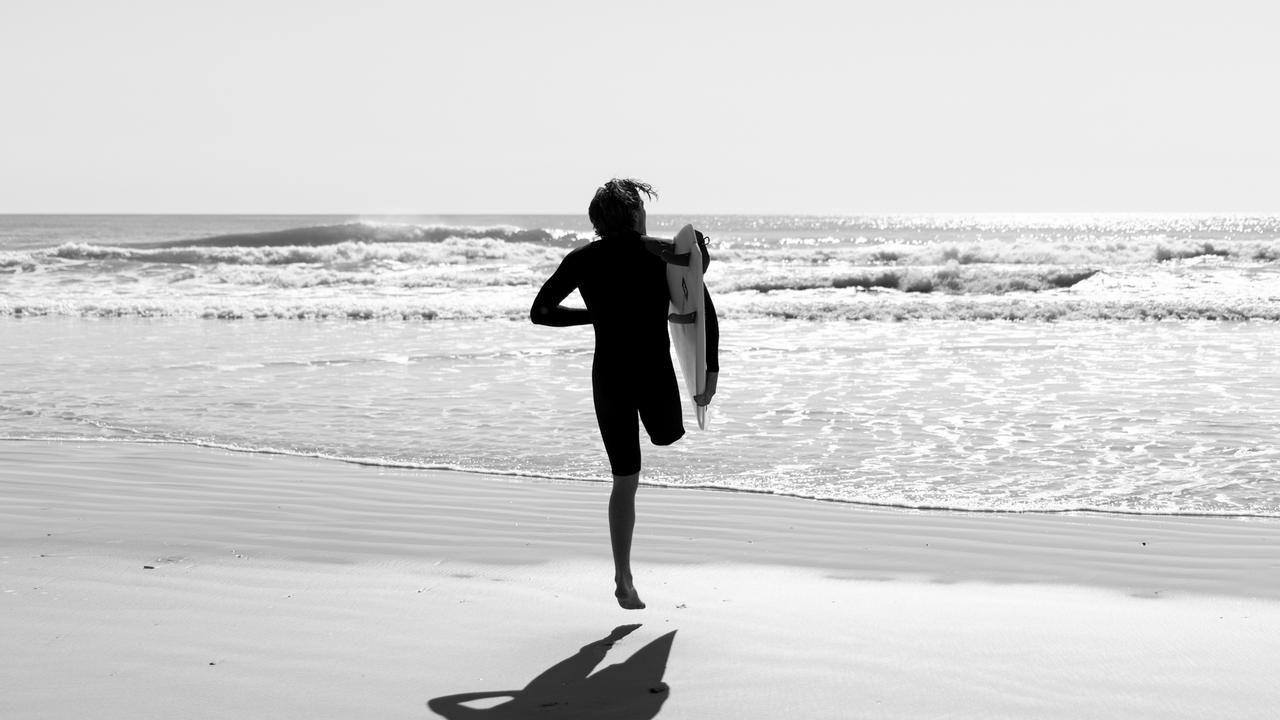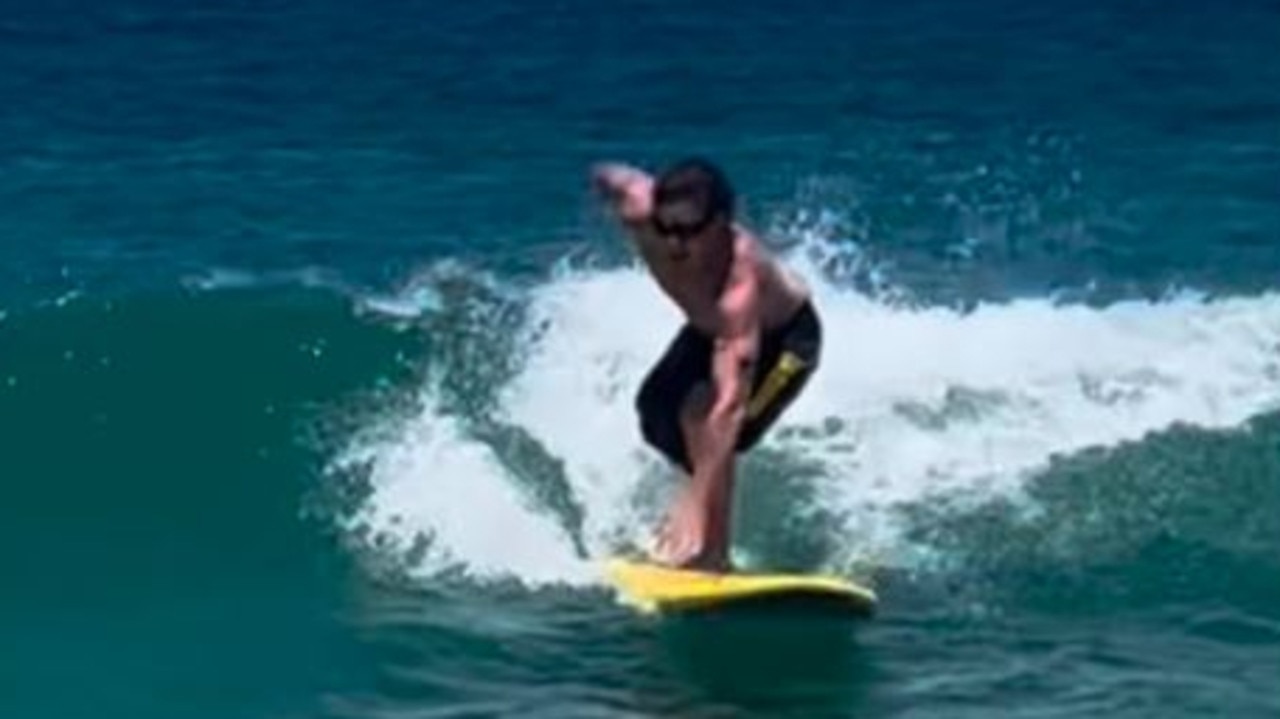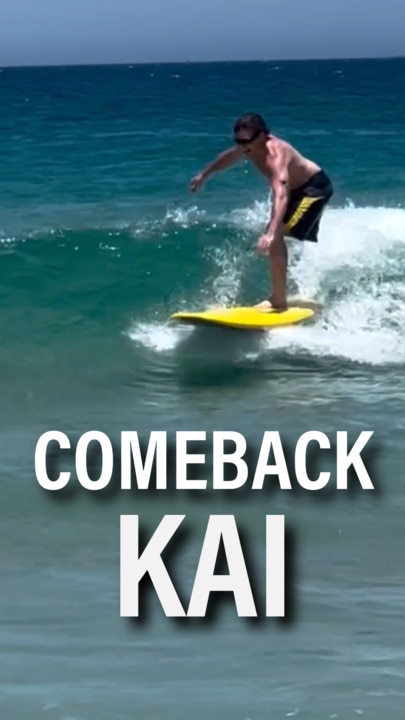Shark attack survivor Kai McKenzie surfs for the first time on one leg
Aussie surfer Kai McKenzie has returned to the waves for the first time after a shark attack claimed his right leg, amazing onlookers with his bravery and skill while surfing on one foot

READING LEVEL: ORANGE
A surfer who lost his right leg to a shark attack months ago has stunned onlookers by returning to the waves and surfing on his one remaining leg.
In a show of remarkable courage, Bonny Hills surfer Kai McKenzie paddled out to the same spot where he had been attacked by a 15ft (4.5m) great white shark four months earlier.
The 23 year old had promised to get back into surfing as soon as he was able to following the attack. McKenzie took off his artificial limb and got back to riding the waves and practising new moves.
The defiant sponsored* surfer paddled out to the spot with laser focus, catching several waves, jumping on his board with one leg and occasionally steering it with one hand when it veered off course.

Buoyed* by the support of his parents, uncle and friends, McKenzie appeared at ease in the water despite admitting he was a bit nervous because the water looked “exactly like that day.”
He later posted on social media of his return to the ocean: “Probably one of the craziest feelings I’ve had!”
“First time back in the water last week I paddled back out where I got bit,” he wrote.
“I sat out there by myself and took it in for a little bit then a bunch of my favourite people had a surf with me. Ya ain’t never gunna take me away from the ocean!”

Six weeks ago McKenzie was fitted with a prosthetic* above the knee, and is said to be working on getting a surf-specific* one.
He has remained largely upbeat since his discharge from John Hunter Hospital in Newcastle where he spent more than one month after the attack at North Shore Beach, just north of Port Macquarie on July 23.
After the initial shock, he kept his spirits uplifted by his mission to return to the water before the end of the year.

Byron Bay adaptive surfing* champion Mark ‘Mono’ Stewart, 62, praised Kai’s “brave” return to the ocean saying “That fear of the shark would have been behind him as he was paddling out and will always remain.”
“Getting back out there is extremely courageous, he’s a very determined man,” he said.
“Kai has an above the knee amputation*, just like me, and it’s hard to surf with one leg at first because your balance and when you wipe out you’ve only got one leg to swing back up.”
Mr Stewart, who lost his right leg to cancer when he was 15, and who won his sixth Association of Adaptive Surfing Professionals world title two months ago, said: “Kai will never be full radical* but he’s young and he’ll adapt fast.”

“There are boards that are brilliant and he’ll be able to take part in the Paralympics by kneeling or standing.”
“He’s taken his first – and biggest- steps by getting out there, it can only get better from here,” he said.
Back in 2003, Hawaiian surfer Bethany Hamilton showed the same bravery in getting back into the water one month after she lost her arm in a shark attack at the age of 13. Two years later she went on to win her first national title against able-bodied surfers, putting extra grit and determination into achieving her goals.

HOW RARE ARE SHARK ATTACKS?
While shark attacks are scary and are often reported in the news, a close look at the data reveals they are extremely rare.
According to the Taronga Conservation Society Australian Shark-Incident Database (ASID), which studies shark-human interactions in Australia, there were, on average, 20 shark incidents each year causing injury to people over the past decade. On average, there were 2.8 fatalities* each year. There were also seven incidents where the person wasn’t injured.

To put things into perspective, people in Australia went to the beach an estimated 600 million times last year, with 16.3 million Australians over the age of 16 visiting the beach on average more than three times each month, according to Surf Life Saving Australia’s annual National Coastal Safety Survey.
In other words, the likelihood of dying from a shark attack in Australia is about 2.8 in 600 million – extremely unlikely.
While there were four fatal shark bites in Australia in 2023, during the same period Surf Life Saving Australia reported 125 coastal drowning deaths. There were also 1,266 fatalities on Australian roads in the same year – proving that car travel is by far the riskiest activity.
WATCH THE VIDEO

POLL
GLOSSARY
- sponsored: when a surfer is given free boards, clothes or equipment by a company in exchange for the surfer promoting the company by wearing its logo
- buoyed: supported
- prosthetic: an artificial limb
- surf-specific: an artificial limb that can be worn while surfing
- adaptive surfing: a form of surfing where a disabled surfer uses a board or surfski to ride on a breaking wave
- amputation: when a limb is surgically removed because of medical reasons
- radical: high level
- fatalities: deaths
EXTRA READING
Australia clinches world junior surfing title
Crazy moment shark bites boat
Surfers brave ‘monster’ waves in Sydney
QUICK QUIZ
1. How soon did Kai McKenzie get back in the water for a surf after the shark attack?
2. How long did he spend in hospital recovering from the attack?
3. Why is it difficult to surf with one leg?
4. On average, how many shark incidents are there in Australia each year?
5. How many times do people visit the beach each year?
LISTEN TO THIS STORY
CLASSROOM ACTIVITIES
1. Facing fears
Getting back on a surfboard in the ocean after the trauma of losing his leg to a shark is an amazing feat not a lot of people could do.
What challenges might Kai have faced to get to this point, and what are some strategies he may have used to overcome those challenges or obstacles.
Work with a partner and fill out the grid below.
How Kai McKenzie went from losing a leg above the knee, to back surfing in the same spot where a shark attacked him four months earlier;
| POSSIBLE CHALLENGE | HOW HE MAY HAVE OVERCOME |
Time: allow 20 minutes to complete this activity
Curriculum Links: English, Health and Physical Education, Personal and Social, Critical and Creative Thinking
2. Extension
Many people fear the ocean, sharks, planes and other life experiences, but statistics show travelling in cars is by far the most risky.
What can we do as a community to make car travel safer and have less fatalities? Think of three possible ways we could aim to reduce this tragic loss of life.
–
–
–
Time: allow 15 minutes to complete this activity
Curriculum Links: English, Personal and Social, Critical and Creative Thinking
VCOP ACTIVITY
Let’s practise taking notes
When note-taking, we want to be able to extract the key pieces of information from the text or presentation. You start with determining the main idea: if you had to explain to someone in a sentence what the article is about, what would you say?
Then back up the main idea with two to four key points to support what you first stated.
What would you put as the main idea and supporting points to back up this article?
Once you have had a go at note-taking.
Share your results with a peer to see if you identified the same information or different.
Discuss the finding if you came up with different information.

